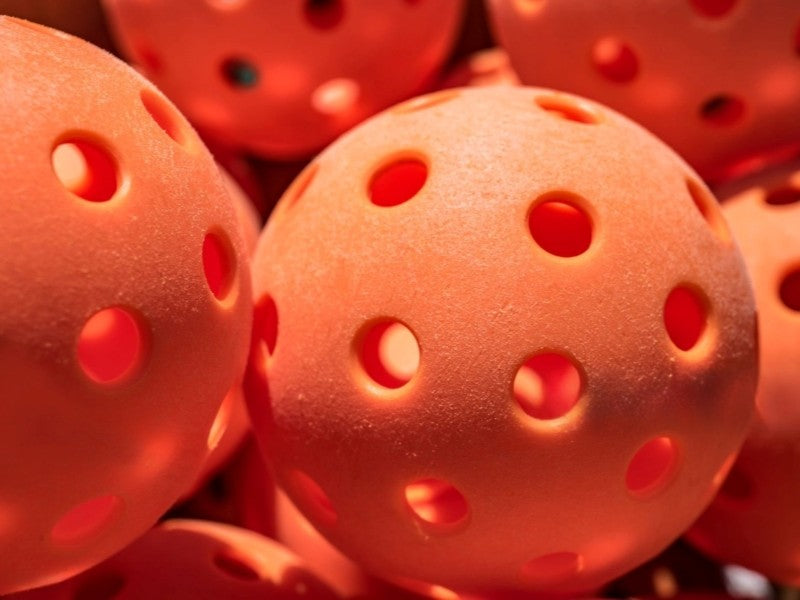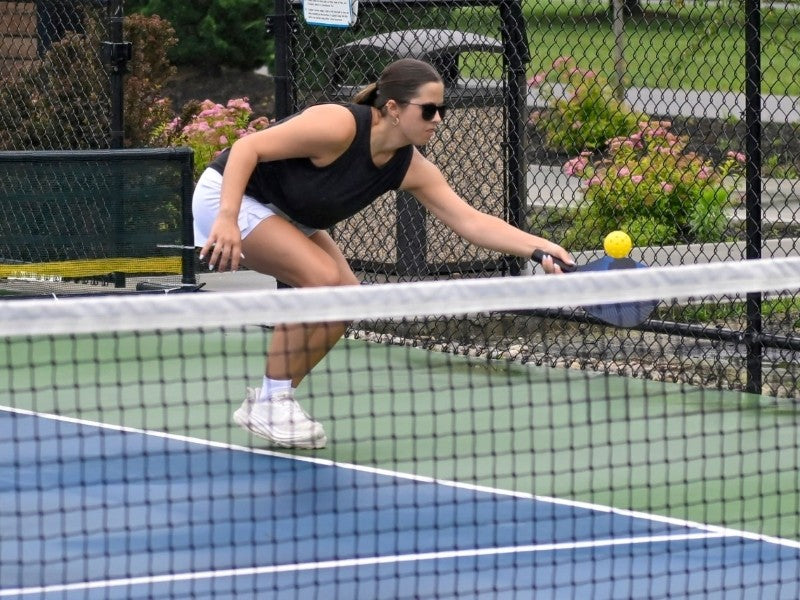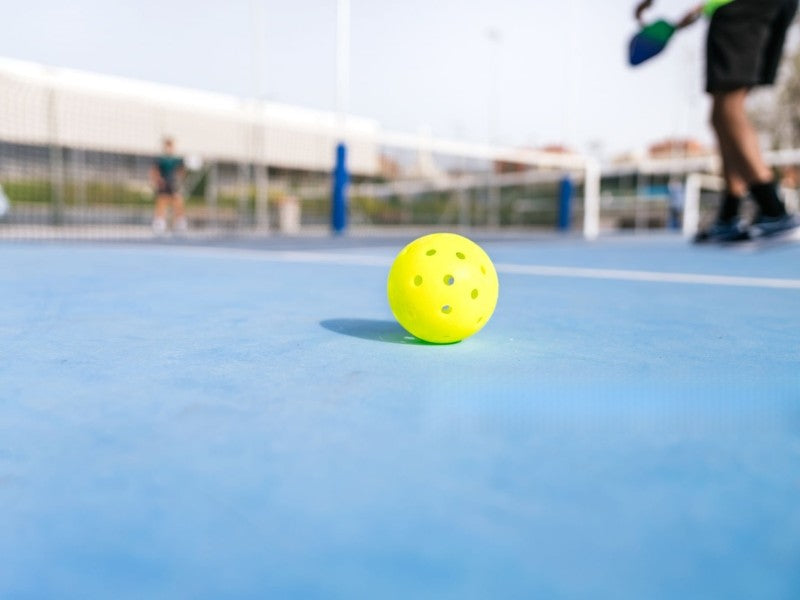If you’ve ever bought a brand-new set of pickleballs only to see them crack, wobble, or go flat within a few games, you’re not alone. Most players—both recreational and competitive—notice that their balls don’t seem to last as long as expected. The main culprits? A mix of surface abrasion, temperature stress, improper use, and manufacturing variability.
In short, here’s what you need to know:
- Typical lifespan: An average pickleball lasts anywhere from a few play sessions to several weeks, depending on how often and where you play.
- Fastest wear factors: Rough asphalt courts, cold weather, and power-heavy play styles.
- Best prevention: Use the right ball for your environment, avoid extreme heat or cold, and rotate your ball sets regularly.
- Pro tip: Premium outdoor balls with thicker walls and welded seams tend to last the longest.
Why Pickleballs Wear Out Fast — The Real Causes
Many players assume that cracks or deformities are just “bad luck.” But in truth, the durability of a pickleball is determined by a complex interaction of material science, environment, and use patterns. Below we unpack each factor—and what you can do to mitigate it.
1. Manufacturing& Design Factors
Not all pickleballs are created equal. The way they’re made dramatically impacts their durability.
- Material composition: Most modern balls are made of polyethylene or other polymer blends. Higher-end models use virgin resin with better elasticity and UV resistance. Cheaper balls often contain recycled plastic, which can make them brittle.
- Seam construction: Two-piece injection-molded balls are the most common. However, the welded seam that connects both halves can become a weak point—especially under repeated hard impacts. “Seamless” balls or those with thermo-fused joints resist cracking longer.
- Hole design: The number, diameter, and pattern of holes affect both flight stability and internal pressure distribution. Uneven hole spacing can create micro-stress points that eventually lead to splits.
- Quality consistency: Even within the same brand, batches may vary. Minor shifts in polymer curing or cooling speed during production can lead to subtle durability differences.
Tip: If you find one batch of balls lasts much longer than another, note the lot code. Consistency matters more than brand name alone.

2. Court Surface Abrasion
Your court type plays one of the biggest roles in how long a ball survives.
- Asphalt and concrete are highly abrasive. Each bounce scrapes microscopic layers from the ball’s surface, thinning its walls over time.
- Sport court tiles or cushioned indoor floors, by contrast, are gentler on the polymer. Balls used exclusively indoors typically last two to three times longer than those used outside.
- Even tiny grains of sand or grit can accelerate wear. When they get trapped in the ball’s holes, every bounce becomes a miniature grinding operation.
Pro insight: If you mostly play on rough public courts, rotate balls between games to spread wear evenly. You can also keep one set for practice and another for matches.
3. Temperature & Environmental Effects
Pickleballs are particularly sensitive to temperature extremes, and many players overlook this.
- Cold weather: Below about 50°F (10°C), plastic polymers stiffen and become brittle. That’s why cracks often appear suddenly during winter play.
- Hot weather: Above 95°F (35°C), the opposite happens—the material softens. Balls lose their roundness and can become slightly “squishy,” leading to erratic bounce.
- Sunlight exposure: UV rays gradually break down polymer chains, causing fading and weakening over time. Leaving balls in direct sunlight—even inside a clear storage container—accelerates this process.
- Moisture & humidity: Water itself doesn’t harm the material, but damp storage can promote grime buildup that affects performance.
Simple rule: If it’s uncomfortable for you outside (too hot or cold), it’s likely hard on your pickleballs too.
4. Player Style & Intensity
Durability isn’t just about the ball—it’s also about how you play.
- Power hitters: Players who frequently smash or drive shots at high velocity generate concentrated impact stress at the seam. Over time, those micro-stresses accumulate and cause splits.
- Spin specialists: Constantly brushing or slicing can create asymmetric wear, producing wobble or “egg-shaped” deformation.
- Drill sessions: Repetitive high-intensity training (especially against a wall or ball machine) wears balls faster than casual matches.
Tip for coaches: Use older or lower-grade balls for repetitive drilling. Save your premium ones for matches and tournaments.
5. Wrong Ball for the Wrong Conditions
This is one of the most common causes of premature wear.
Pickleballs are divided into indoor and outdoor types for a reason:
|
Type |
Hole Count |
Material Hardness |
Best For |
Durability Note |
|
Indoor |
~26 holes |
Softer plastic |
Gym/smooth floors |
More control, less crack resistance |
|
Outdoor |
~40 holes |
Harder plastic |
Asphalt/concrete |
Withstands impact, wears from abrasion |
Using an indoor ball outside often results in rapid cracking because it’s not designed to handle the combination of rough surfaces and higher impact energy. Conversely, using outdoor balls indoors tends to produce excessive bounce and noise.
Tip: Always check packaging or product specs—using the correct ball type can double or triple its lifespan.
6. Storage & Handling Mistakes
Even when you’re not playing, how you store your pickleballs matters.
- Avoid temperature extremes: Storing balls in your car trunk or garage during summer or winter shortens their usable life dramatically.
- Prevent compression: Don’t keep heavy items on top of pickleball bags; prolonged pressure can deform their shape.
- Clean before storage: Dirt particles left on the surface act as micro-abrasives when you next play.
- Ventilation: Store balls in a breathable bag rather than a sealed box to prevent heat buildup.
Bonus tip: If you live in a hot region, consider keeping balls indoors and only bringing them out shortly before play.
7. Counterfeit or Aged Products
It’s easy to assume all balls on the market are fresh, but that’s not always the case.
- Old stock: Some online sellers offload older inventory that’s been sitting in warehouses for years. Polymers degrade even without use, especially if exposed to heat or light during storage.
- Counterfeits: Fake pickleballs may look identical to name-brand ones but lack proper material formulation or seam strength. They often crack within a few games.
- Clues to watch for: Misspelled labels, lack of manufacturer logo, or mismatched color tone.
Advice: Always buy from reputable retailers or directly from known brands. For club purchases, test a small batch before committing to bulk orders.
How to Spot a Failing Pickleball — Quick Diagnosis Guide
You don’t need lab equipment to tell when a pickleball has reached the end of its life. A quick visual and functional inspection will do.
1. Visual Indicators
- Hairline cracks: Start as thin white lines, usually near holes or seams.
- Seam separation: Slight ridge or visible gap where halves meet.
- Surface dullness: A loss of shine or discoloration indicates material fatigue.
- Shape distortion: Roll it on a flat surface—if it wobbles, it’s no longer round.
2. Functional Symptoms
- Strange sound: When struck, an old ball produces a duller “thud” rather than a crisp “pop.”
- Inconsistent bounce: Drop it from shoulder height; a worn ball may rebound unpredictably or less than expected.
- Flight instability: Wobbling or fluttering mid-air signals internal imbalance.
3. Simple At-Home Tests
- Drop Test: Drop the ball from 40 inches onto a hard surface and measure bounce height.
- Spin Test: Spin it on a table; it should rotate smoothly without wobble.
- Seam Tug Test: Apply gentle pressure at the seam; if you see flex or separation, it’s time to retire it.
4. Replacement Checklist
Replace your pickleball if it meets any of these criteria:
- Visible crack, split, or deep scuff
- Noticeable wobble or reduced bounce
- Seam starting to open
- Lost its shape or feels soft
- Has been used for more than several intense sessions on rough courts
Rule of thumb: If you notice performance drop-offs, don’t wait for a full break—retire early. Playing with damaged balls affects consistency and increases the risk of injury.
How to Tell When It’s Time to Replace Your Pickleballs
Even the best pickleballs have a limited lifespan — and knowing when to retire them can prevent performance issues and potential injuries. Here are some common warning signs that your balls are nearing the end of their life cycle:
1. Cracks or Splits
Outdoor pickleballs, especially after prolonged exposure to UV rays or hard impacts, tend to develop hairline cracks or visible splits. Once this happens, the bounce becomes inconsistent, and the ball may break mid-rally.
2. Deformation or Flattening
A good pickleball should retain a perfectly round shape. If you notice dents or flattening — especially after being stepped on or hit by strong paddles — the flight path and bounce will be off.
3. Unusual Bounce
Drop your ball from 30 inches onto a hard surface. If it doesn’t bounce at least 30 inches back (for outdoor models), it’s time to replace it.
4. Rattling Noise
A rattling sound inside the pickleball often indicates internal fractures or debris — a sign that the ball’s internal structure is failing.
Pro Tip:
Competitive players replace balls every few sessions, while casual players may get 3–6 months of use depending on care and environment.
Maintenance Tips to Extend the Life of Pickleballs

While you can’t make a plastic ball immortal, proper storage and handling can significantly extend its lifespan.
Store Properly
Keep pickleballs in a cool, dry place — ideally between 10–25°C (50–77°F). Avoid leaving them in your car trunk or under direct sunlight, as heat softens plastic polymers and accelerates aging.
Clean Regularly
Dirt and sand increase surface friction and wear down the ball. Rinse them occasionally with lukewarm water and mild soap, then dry completely.
Avoid Excessive Pressure
Don’t sit or step on pickleballs, and avoid storing them under heavy paddles or equipment. Compression permanently distorts their shape.
Rotate Your Balls
If you play frequently, use a rotation system. Keep multiple sets and rotate them every few sessions to distribute wear evenly.
How Long Do Pickleballs Really Last? (Real-World Averages)
|
Type |
Typical Lifespan |
Best For |
Key Notes |
|
Outdoor Pickleballs |
3–10 hours of play |
Tournaments & competitive players |
Fragile due to impact and UV exposure |
|
Indoor Pickleballs |
20–50 hours |
Recreational & gym use |
Longer life thanks to softer courts |
|
Durable/Advanced Polymers |
2–3× longer |
Pros or high-frequency players |
Made from proprietary blend plastics |
|
Budget Balls |
2–5 hours |
Casual use only |
Cheap, but prone to cracks and warping |
These figures can vary by brand, player power, and court surface. The main takeaway: no pickleball lasts forever, but smart players can double the usable life through careful handling and selection.
The Most Durable Pickleball Brands of 2025
As the sport grows, manufacturers are developing stronger, more resilient designs. Below are some of the top-rated durable brands this year:
· Srikel XS-40™ Outdoor Pickleballs: Known for tournament consistency and crack resistance.
· Onix Fuse G2: Balanced durability with great bounce control.
· Dura Fast 40: The classic outdoor ball, slightly harder but wears faster in cold weather.
· CORE Outdoor: A new contender with superior UV-resistant material and excellent roundness retention.
When shopping, always check for USAPA approval and read user reviews about longevity under your local conditions (humid, dry, hot, or cold).
Why Your Pickleballs Don’t Last (and What to Do About It)
If you’ve ever felt frustrated that your pickleballs break too soon, the truth is:
· It’s not just you — environmental stress, UV exposure, and design limits all play a role.
· The key is choosing the right type for your environment, handling them correctly, and replacing on time.
By understanding the science behind pickleball wear and adopting smarter care habits, you’ll enjoy more consistent games, fewer interruptions, and better overall value from your gear.









Leave a comment
This site is protected by hCaptcha and the hCaptcha Privacy Policy and Terms of Service apply.